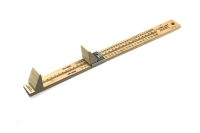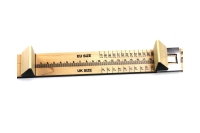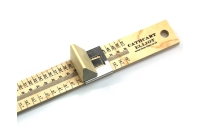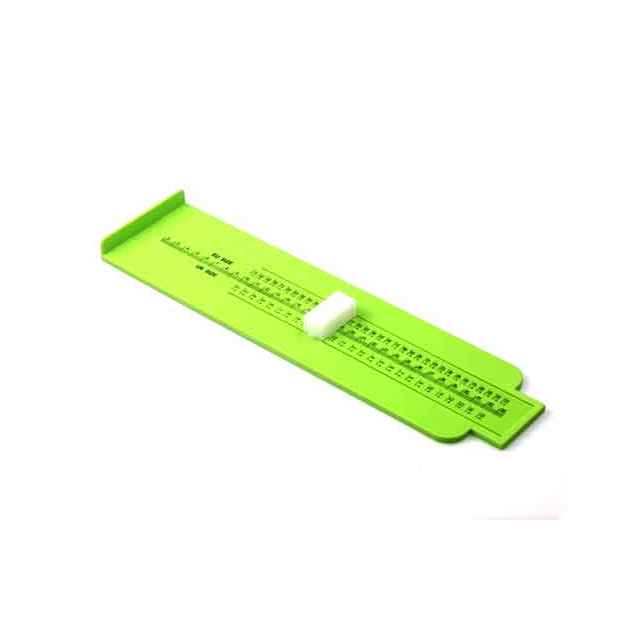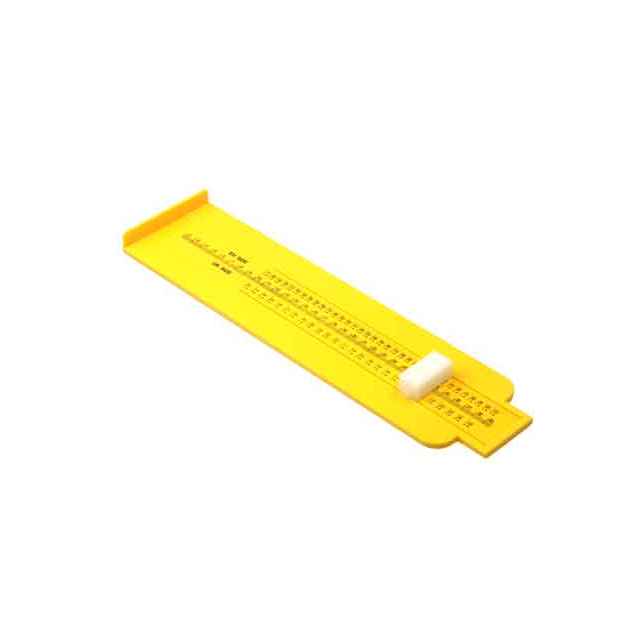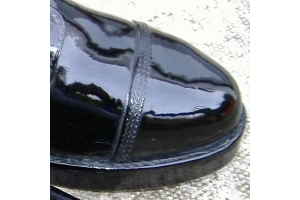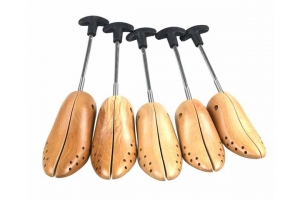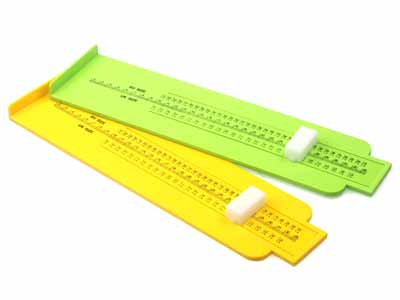
Your "Correct" Shoe Size
There are several factors that affect the size of your feet and why they may not be the size you think you are.
This is not constrained to the following, but is a good start.
- The tool you used to measure your feet - and the scale
- The Manufacturer of the shoes you wear
- The style of the shoes you wear
- Age
- Weight
- Time of Day
- Other health matters
TOOLS, SCALES & STYLES
There are dozens of foot measures out there. None of them are correct! They are all estimates. Some better than others. Some, like Clarks foot sizer, are ONLY correct for Clarks own shoes - It might be good enough for some other manufacturers of shoes, but not always. The Brannock scale looks good and official, but for me anyway, it's miles out! Which is why we have made our own, based on 30 years of fitting shoes. But we are talking about good quality shoes not mass produced items from the far east. There is at least a little consistency in most of the Italian sizing - but the Spanish EU sizing differs from the North and far south !
The most consistently correct sizes are, without doubt, British-made Northampton shoes. The reason they are so consistent is that the lasts have been used for over 100 years and so have the makers - they know how to make shoes!
The EU scale does not correspond directly to UK size scale. A Ladies Size 5 corresponds almost exactly to an EU size 38, and a Mens Size 8 corresponds exactly to an EU 42. But that is where the precision ends. All other sizes fall between the gaps. Many business call a UK size 9 an EU 43, when it more like 43.2 which is why an EU sized shoe in 43 can be a little small if you are normally a 9 UK. Another area of hot dispute is the EU size 39, 40 and 41 which cover UK sizes 6 to 7 - three EU sizes fit between 2 UK sizes.
Mens American sizing can be anything from a half to one full size different from the UK, and for ladies 2 or 2.5 sizes different. And when it comes to trainers - you have to try them on, or measure you feet in cm and ask the store, as trainer sizes can be wildly out!
For more inconclusive information on sizing see Wikipedia - but don't necessarily believe everything you read there.
MANUFACTURERS
All shoe makers use their own sizing. (More below) Among other things, they allow different amounts of space for the toes - depending on the shape of the fore-part of the shoe. Traditional Classic English Shoe-makers, make their shoes on "lasts" - these are trade secrets of the makers, they do not have consistent sizing between makers. Although they are probably the most consistent!. They are especially different when it comes to naming width. An E for one maker can be an F for another. It doesn't mean much until you know the maker and some of their styles.
Width fittings are even more unreliable than size.
Shoe construction also makes a difference. A Moccasin requires much less room for the toes than say a classic oxford shoe. A Goodyear welted shoe might feel a little snug at first but will become your best friends once worn in.
AGE
Your feet get both wider and longer as you get older. That's because as we age, the tendons and ligaments that link the tiny bones in our feet lose elasticity. This allows the toes to spread out and the arch of the foot to flatten causing our feet to become longer and wider. In fact, by some estimates, feet can grow as much as a half size every decade after the age of 40 !
WEIGHT
It is a little inevitable that as we get older we put on a bit of weight, this tends to spread our feet both in length and width
TIME OF DAY
Your feet are smaller in the morning than the afternoon. It is best to size your feet in the afternoon! And to buy shoes in the afternoon if trying on in a shop. Your feet spread out during the day.
OTHER HEALTH MATTERS
Hammertoes, arthritis, hormonal changes, diabetes, osteoporosis and circulation issues are but a few of the conditions that can really affect the size of shoes we need. Bunions in particular force many women to buy shoes that are much bigger. Ladies Shoe stretchers or Mens Shoe Stretchers can help
HOW TO MEASURE YOUR FEET
Get one of our premium wood foot sizers - it does all ages from 6 months in both EU and UK.
Measure your foot standing (your foot spreads), measure in the afternoon, measure both feet (one is usually larger than the other)
Best of all - we included a cm ruler so if required you can call the store/seller/manufacturer and ask them to help size you.
When it comes to shoes, sizing is an essential aspect that can make or break the entire experience of wearing a pair. However, different shoe manufacturers have different sizing scales, which can be confusing and frustrating for consumers. But why do these differences exist?
Here are some possible reasons:
Historical and cultural factors:
Shoe sizing has a long and varied history, with different countries and cultures developing their own sizing systems. For example, the European shoe size system originated in France during the 18th century, while the American shoe size system was developed in the early 20th century. The British system is much older and the Northampton factories still keep their 'lasts' as trade secrets. These systems were developed independently, and over time, they evolved differently. As a result, shoe sizes can vary significantly between countries, and even between regions within countries.
Manufacturing processes:
Different shoe manufacturers use different manufacturing processes, which can affect the sizing of their shoes. For example, some manufacturers may use more or less padding in their shoes, which can affect the fit and feel of the shoe. Additionally, the type of material used can also affect the sizing, as some materials are more rigid or stretchy than others.
Target audience and market:
Shoe manufacturers may also tailor their sizing to their target audience and the market they are selling to. For example, a company that specializes in athletic shoes may have a different sizing system than a company that specializes in dress shoes, as the requirements for fit and comfort are different in these two categories. Similarly, a company that targets children may have a different sizing system than a company that targets adults.
Brand identity and differentiation:
Finally, shoe manufacturers may use sizing as a way to differentiate themselves from their competitors and build their brand identity. For example, a company may choose to use a more generous sizing system to make their shoes seem more comfortable and accommodating, or they may use a more exact sizing system to emphasize the precision and quality of their products.
In conclusion, there are many factors that can influence why different shoe manufacturers have different sizing scales. From historical and cultural factors to manufacturing processes, target audience, and brand identity, these differences can make it challenging for consumers to find the right size. However, with careful measurement and research, it is possible to find the perfect pair of shoes that fit well and feel comfortable, no matter the brand or sizing system. If the shoe fits - wear it!

